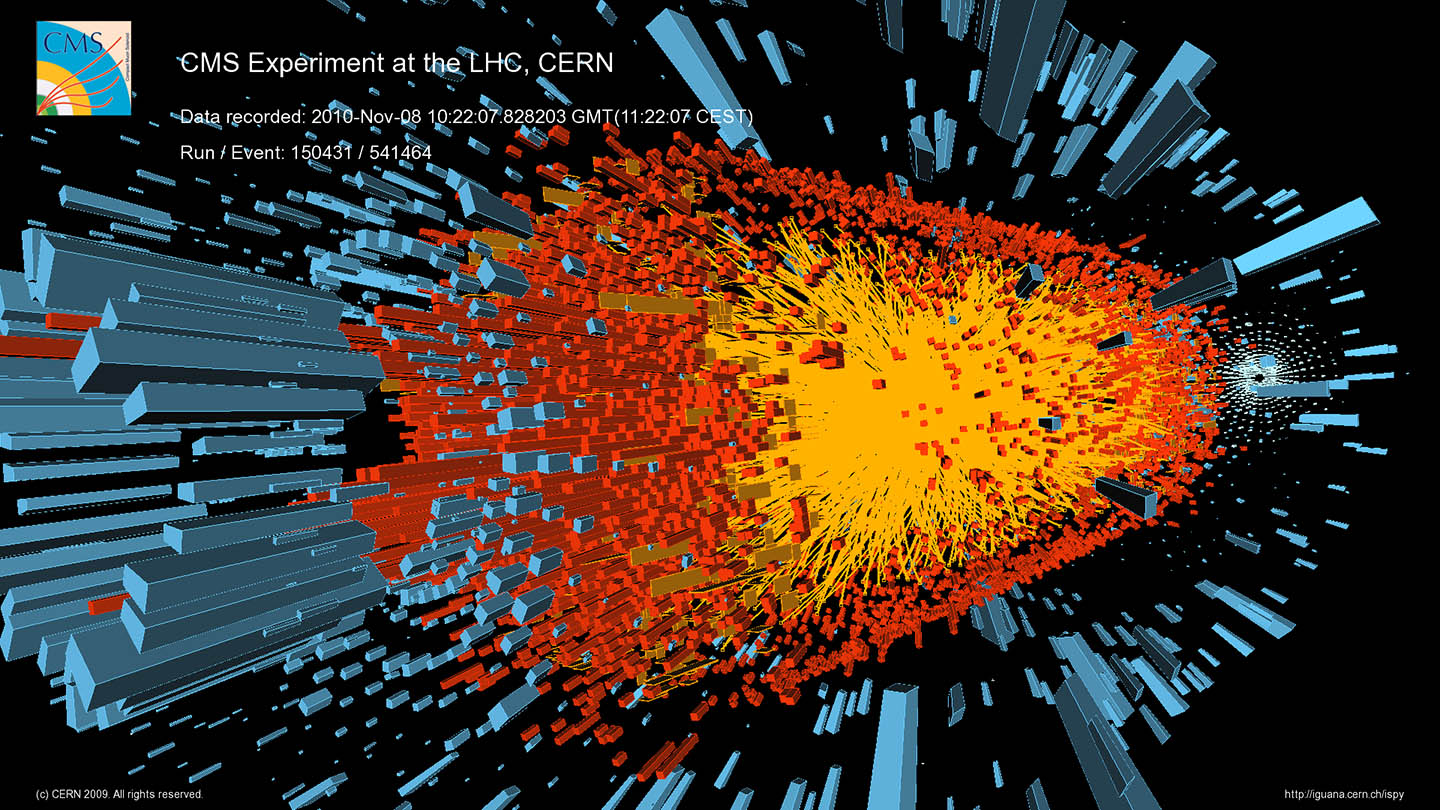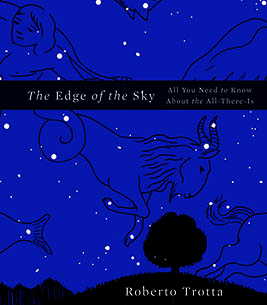
Explaining science plainly can lead to new insight—and a challenge
By Dr. Roberto Trotta
Technically Speaking is a new column for Army AL&T magazine. Its title is frankly ironic, because its aim is to challenge subject-matter experts to explain a highly technical job, a system or a concept in the plainest language possible. The point is that, as Dr. Jacques Gansler and many other former and present defense dignitaries have noted, DOD science and technology (S&T) experts often do not do the best job of explaining what they do and why it’s important.
Every work specialty—from short-order cooking to high-rise construction to nuclear research—has its own language, which often is shorthand for something that would be laborious or time-consuming to say in plainer language when probably everyone around the “office” knows what you’re talking about. Jargon can also be aspirational—learning it can be a rite of passage for people on their way to becoming highly skilled professionals. But a significant gulf remains in this society between the actual work of S&T and the public’s understanding of it.
For DOD and the Army, there are potentially very real consequences to this inability to explain clearly what the work is and why it’s important. If Capitol Hill doesn’t understand the value of a program, or if it is open to ridicule because it is poorly explained, that makes the case for funding much more difficult. Complicating the technical jargon are the additional levels of government jargon.

BIG RING: Student-people take normal matter drops and make them fly around the Big Ring almost as fast as light. (Image courtesy of CMS Experiment/CERN).
From Alan Alda’s Center for Communicating Science to the Ten Hundred Words of Science Challenge, there are many efforts to challenge highly technical people to speak plainly about their work. Through this column, Army AL&T is joining them with our own challenge to the Army S&T community.
For this inaugural column, we reached out to perhaps the most accomplished explainer of hard-to-understand concepts, Dr. Roberto Trotta, a British astrophysicist and author of the book “The Edge of the Sky.” Trotta agreed to be our inaugural explainer.
A MOMENTOUS DISCOVERY … OR IS IT?
On July 4, 2012, Joe Incandela, the spokesperson for the CMS [Compact Muon Solenoid] experiment at Large Hadron Collider in Switzerland, the largest particle accelerator in the world, announced to a packed auditorium: “If we combine the ZZ and gamma-gamma, in the region of 125 GeV they give a combined significance of 5 standard deviations!”
As everybody cheered (and Peter Higgs shed a few tears), it was not immediately obvious to anybody but the particle physicists in the room what the significance of this was. What Incandela was saying was that they had discovered the Higgs boson, the “God particle” that gives mass to all other particles.
For the public at large, nothing short of a translation would do.

STUDENT-WOMAN AND BIG-SEER: “The Edge of the Sky” tells the story of a female scientist (“Student-Woman”) as she spends a night at one of the largest telescopes (“Big-Seer”) on Earth (“Home-World”). (Illustration by Antoine Déprez)
JARGON: PUBLIC ENEMY NO. 1
The obvious enemy to clear communication with the public is jargon. Whether it’s scientists talking about their work to nonspecialists, or Army acquisition officials making their case with defense undersecretaries, we are all guilty of slipping into jargon all too often, sometimes involuntarily.
But fundamental science is funded with taxpayers’ money, and I believe it is a duty for the professional scientist to engage the public in a two-way discussion about their work, its objectives and the very reason of its being. The first obstacle to this aim
is jargon.
As an astrophysicist with a passion for communicating with the public, for the last decade I have been looking for novel ways of engaging new audiences with my science. All this time—I now realise—what I was searching for was a language to translate in a more pictorial, immediate way the often complex and abstruse cosmological concepts my research is about: dark matter, dark energy, the Big Bang and the fundamental nature of the universe. A language capable of overcoming the barrier that is the technical knowledge gap between the science professionals and the public.
LESS IS MORE
Then one day in January 2013, I stumbled on the Ten Hundred Words of Science challenge—a website collecting people’s descriptions of their jobs written using only the most common 1,000 words in English.
The format was inspired by a cartoon by Randall Munroe, the creator of the XKCD website. This is a humorous site with geeky sticklike cartoons, often revolving around physics, maths, computer science and other technical subjects. Randall had drawn a picture of the Saturn V moon rocket (or “Up-Goer Five”), and labeled its parts using only the 1,000-words list.
That got me thinking: Perhaps this was the new language I had been looking for! And perhaps it could be used to talk about everything in the universe, not just my job.
IN SO MANY WORDS …
“The Edge of the Sky” is the result of that small eureka moment: a short book that follows a female scientist (“Student-Woman”) as she spends one night at one of the largest telescopes (“Big-Seer”) on Earth (“Home-World”), and recounts the tale of how we got to understand the universe (“All-There-Is”) and of its many outstanding mysteries. All of it using only 707 words out of the allowed 1,000.
In the simple, straightforward language of my book, this is how the Higgs boson was discovered:
There is a city in a land full of safe places to put your money in. People there know how to make sweet, dark bars that make your mouth water. They build tiny wood houses that tell the time with the song of a little flying animal, also made of wood.

‘THE EDGE OF THE SKY’: Trotta’s book is an adventure in describing the universe and astrophysics using only the most common 1,000 words in English. He ended up using only 707 of them.
Near that city, student-people have built a large ring under the ground. It would take you over five hours to walk around that Big Ring.
Student-people take normal matter drops and make them fly around the Big Ring almost as fast as light.
Then they pick a point where they make the normal matter drops hug each other, and they look at what kind of other drops come out of their hot kisses.
This way, student-people have already found a new type of drop that no one had seen before, but that Doctor Higgs had a long time ago said should be there.
Dr. Higgs was very happy about this.
One thing I learnt from my foray into experimental literature with “The Edge of the Sky”: Limiting our lexicon to such a drastic extent forces us to rethink concepts and ideas we thought we were familiar with. The result was for me a refreshingly new perspective on my subject—and one that I hope my readers will enjoy.
Writing with only those simple 1,000 words was harder than I thought. I’d like to invite you to take the 1,000 words challenge and try to explain your own work by visiting my website, http://robertotrotta.com/1000-words/. I’d be delighted to hear from you.
DR. ROBERTO TROTTA is a theoretical cosmologist at Imperial College London, where he studies dark matter, dark energy and the Big Bang, and a Science and Technology Facilities Council Public Engagement Fellow. He is the recipient of numerous awards for his research and outreach, including the Lord Kelvin Award of the British Association for the Advancement of Science and the Michelson Prize of Case Western Reserve University. “The Edge of the Sky” was published in September 2014 by Basic Books. Publisher’s Weekly said, “…in Trotta’s hands, this beautifully written book, with its limited vocabulary, soars.”
How did he do? Go to the U.S. Army Acquisition Support Center’s Facebook page at Facebook.com/usaasc and let us know how you think Dr. Trotta did with his explanation. You, too, can take the challenge. Send your explanation of a complex technical or scientific concept, system or job , using only the 1,000 most commonly used words in the English language, to ArmyAlt@gmail.com. Each issue of Army AL&T will feature a new explanation.
This article was originally published in the January – March 2015 issue of Army AL&T magazine.
Subscribe to Access AL&T is the premier online news source for the Acquisition, Logistics, and Technology (AL&T) Workforce.
![]() Subscribe
Subscribe







